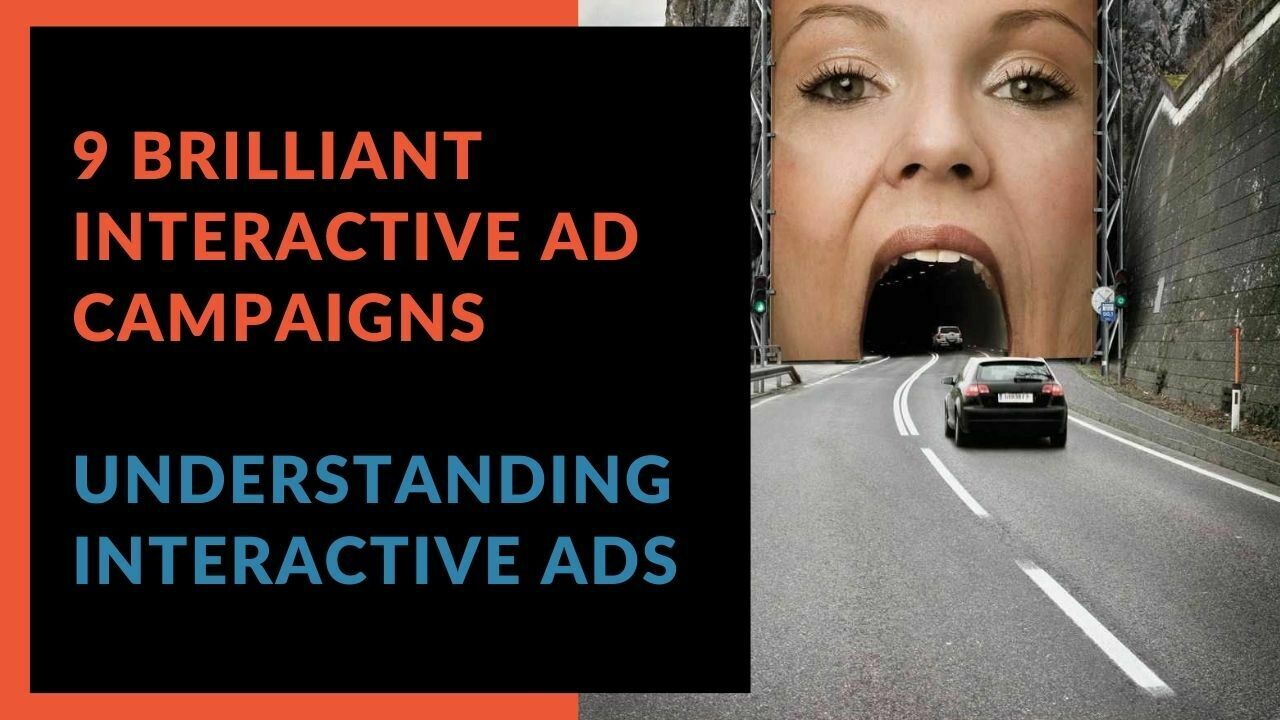Unveiling the Secrets of Successful Campaign Advertising
Intro
Every election cycle, we are inundated with a barrage of campaign advertisements. From carefully crafted slogans to catchy jingles, each ad is meticulously designed to persuade, engage, and leave an impression. But what separates successful campaign advertising from the ones that fall flat? Let’s take a deep dive into the art and science of successful campaign advertising.

Also visit:
Digital Marketing Agency in Nepal
Video marketing Agency in Nepal
Social Media Marketing Agency in Nepal
The Evolution of Campaign Advertising
Journeying through the annals of campaign advertising is like traversing a timeline of human innovation. Remember the simple days of print handbills and town crier announcements? Fast forward to the transformative years of radio and television, and you’ll notice campaign ads acquiring greater reach and complexity. The power of broadcast media amplified the reach of political messages, enabling them to be heard and seen by millions.
Yet, we’ve witnessed another revolutionary shift recently. The emergence of digital and social media platforms has catapulted campaign advertising into a new era of hyper-targeted messaging. Now, not only can campaign ads reach a global audience in real-time, but they can also be tailored to specific groups or even individuals. This level of personalization and targeting was unthinkable just a few decades ago.
Today’s digital landscape allows politicians to deliver tailored messages to voters based on their interests, location, or voting history. Campaigns can now reach their potential voters right where they spend a considerable amount of their time: on their screens. A voter scrolling through social media could encounter a campaign ad that speaks directly to their concerns and interests, making the message all the more persuasive.
But, as exciting as this new frontier of campaign advertising might seem, it’s also more challenging. With the potential to target messages so specifically, campaigns must be more nuanced, informed, and strategic than ever. They need to navigate the fine line between personalized messaging and perceived invasion of privacy.
As we stand at the precipice of this new era, it’s fascinating to reflect on the evolution of campaign advertising. It’s a testament to our innovation and adaptability, constantly pushing the boundaries of what’s possible in political communication.
Importance of Understanding Your Target Audience
Grasping the pulse of your target audience is akin to locating the true north for any campaign. It’s about identifying the electorate you need to resonate with. What are their fears, their dreams, their concerns? Peeling back the layers of demographic and psychographic data, and painting a picture of the political environment can assist in shaping your message. Successful campaign advertising transcends the rhetoric to establish a genuine connection with voters on an individual level.
Dive deep into research to identify the age, income, education, and other demographics of your potential voters. What motivates them? What keeps them up at night? More importantly, what solutions are they seeking? Combine this with psychographic data, which includes values, attitudes, and lifestyles. Factor in the political environment – are the voters conservative, liberal, or somewhere in the middle?
The aim is to create a multifaceted portrait of the voters you wish to reach. It’s like a complex jigsaw puzzle, where each piece – each snippet of information – brings you closer to completing the picture. And once that picture is clear, your message can be laser-focused to speak to the heart of your audience’s concerns and desires.
Remember, in the realm of campaign advertising, understanding your audience is not just a strategy – it’s an essential element of connection and persuasion. With this understanding, you can tailor your message to not only resonate but also spark engagement, creating a path for a successful campaign.
Also visit:
Google marketing agency in Nepal
Instagram marketing agency in Nepal
Animation video company in Nepal
Facebook marketing agency in Nepal
Crafting a Compelling Campaign Message
After gaining a deep understanding of your target audience, the next move is to concoct a powerful campaign message that strikes a chord. What is your candidate’s unique vision? How can their policies positively affect the electorate?
A powerful campaign message isn’t just about sharing a vision—it’s about distilling that vision into a clear, concise message that emphasizes your candidate’s unique appeal. This message should resonate with voters, prompting them to recognize your candidate as the answer to their needs.
The key is to focus on issues that matter to your audience. Link your candidate’s policies and values to these issues, painting a vivid picture of how their leadership will lead to a brighter future. It should incite hope, belief, and most importantly, action.
Your campaign message should go beyond words—it should be a call to action. A nudge that moves your voters from passive observers to active participants in the political journey. It should ignite a spark that motivates them to cast their vote in favor of your candidate.
In a world of noise and competition, crafting a compelling campaign message is more than just speaking—it’s about making your voice heard. Remember, you’re not just sharing a message; you’re telling a story. A story of your candidate’s journey, their vision, and their commitment to the voters. Let that story be clear, let it be compelling, and let it resonate with the hearts of your audience. In the end, it’s this emotional connection that will determine the success of your campaign advertising.
The Role of Emotional Appeal in Campaign Advertising
In the grand theater of campaign advertising, emotion is the leading actor. It plays a pivotal role in shaping voters’ perceptions, driving their decisions, and ultimately influencing their actions. It’s a universal truth – we’re creatures of emotion. We react, empathize, and connect on an emotional level. That’s precisely why successful campaign ads smartly harness the power of emotional appeal.
Let’s delve into the realm of emotion in politics. Campaign ads often invoke emotions like hope, fear, anger, or pride to engage voters. A poignant ad can tug at the heartstrings, stir up sentiments, or even ignite a spark of passion. For instance, an ad might instill hope by painting an inspiring vision of the future under the candidate’s leadership. Conversely, it might evoke fear by highlighting the potential negative consequences of an opponent’s policies.
But here’s a word of caution: emotional appeal is a double-edged sword. While a genuine emotional connection can win voters’ hearts, an attempt to manipulate emotions can lead to backlash. It’s crucial that the emotional undertones in your campaign ads come across as authentic and respectful.
Furthermore, remember that emotions are not a standalone element. They should seamlessly intertwine with your overall campaign message, resonating with the voters’ concerns and aspirations. When done right, emotional appeal can turn a campaign ad from merely persuasive to truly unforgettable. So, as you craft your campaign advertising, don’t just aim for the voters’ minds – aim for their hearts.
Also visit:
Digital marketing helps to grow business
Online marketing helps to increase sales
Digital marketing is different from traditional marketing
Advantages from digital marketing
The Power of Visual Elements in Campaign Ads
Imagine a billboard with a powerful image and a catchy tagline, a video ad featuring your candidate’s passionate speech, or an infographic that breaks down complex policies into digestible bits. This is the magic of visual elements in campaign advertising. They capture attention, create a lasting impression, and most importantly, reinforce your campaign message in a compelling manner.
Visual elements are the gatekeepers of your campaign message, luring voters into your narrative and helping them digest the information. They play a critical role in narrating the campaign’s story, making it both relatable and memorable for the voters. Think of them as the silent, yet potent actors on the stage of campaign advertising.
High-quality photographs, captivating videos, striking colors, and effective fonts can evoke emotions, clarify complex concepts, and underscore the campaign’s key messages. For instance, a poignant image can stir up sentiments, while an infographic can simplify a policy proposal, making it more accessible to the average voter.
Visual elements are not just about aesthetics; they can also lend credibility to your campaign. They serve as visual proof that substantiates your message. A picture of your candidate in a community meeting can showcase their dedication and accessibility, making them more relatable to voters.
As you navigate the exciting world of campaign advertising, remember the power that visual elements hold. They’re more than decorative accessories; they are powerful tools that can amplify your message, stir emotions, and create a lasting impact. So, when crafting your campaign ads, let visuals take center stage and watch them bring your message to life in ways words alone can’t achieve.
Leveraging Social Media for Campaign Advertising
As a bustling hub of interaction and exchange, social media is a veritable gold mine for campaign advertising. Its real-time connectivity, personalized outreach, and instant feedback mechanisms make it a game-changer in the realm of political communication. Each platform, be it Facebook’s ubiquitous reach, Twitter’s concise messaging, Instagram’s visual appeal, or YouTube’s engaging video content, brings unique opportunities to connect with voters. The trick lies in harnessing the distinctive strengths of each platform while maintaining a consistent narrative throughout.
Engage your audience in dialogues on Twitter, inspire them with compelling stories on Instagram, keep them informed with regular updates on Facebook, and sway their opinions with persuasive videos on YouTube. Tailor your message to the platform while staying true to your overall campaign message. These platforms also allow for advanced audience segmentation, letting you customize your message to resonate with different demographics.
Remember, social media is a two-way street. It’s not just about broadcasting your message, it’s also about listening, interacting, and responding to your audience. It gives you the unique opportunity to receive instant feedback, gauge voter sentiment, and adjust your strategy accordingly. It’s about creating a community, sparking conversations, and fostering relationships.
The real-time nature of social media also allows for rapid response in the face of evolving political situations. But tread carefully. The same viral nature that can magnify your message can also amplify a mistake. A misplaced tweet or an insensitive post can be costly, so ensure that all your social media communications align with your campaign’s ethos and objectives.
While social media is an invaluable tool, it should complement, not replace, traditional campaign methods. Striking the right balance between digital and traditional mediums can maximize your reach and impact. With careful planning and strategic use, social media can become your campaign’s most powerful ally.
Measuring Campaign Advertising Success
In the ever-evolving arena of campaign advertising, monitoring and measuring your campaign’s effectiveness isn’t just an add-on—it’s a necessity. Like a compass guiding you through a dense forest, these metrics can illuminate your path, revealing what’s working and what’s not. Are your ads striking a chord with the audience? Is there an uptick in engagement? Are the viewers converting from passive spectators to active participants, rallying behind your candidate?
Keeping a pulse on such metrics is akin to having your finger on the heartbeat of your campaign. Key metrics to consider include reach—how far and wide your ad is spreading—engagement—how many people are interacting with your ad—and conversion rates—how many viewers are taking the desired action, such as signing up for updates, making a donation, or pledging their vote for your candidate.
But beyond the numbers, don’t overlook the qualitative feedback. Are people talking about your ad? Is it generating a buzz in both online and offline spheres? Is it sparking conversations, debates, or discussions? Remember, in the political arena, stirring dialogue is often as valuable as achieving high numbers.
This process of measurement isn’t merely a post-mortem analysis. Instead, it’s a continuous cycle of feedback and refinement, enabling you to tweak and enhance your campaign strategy in real-time. Armed with this data, you can make informed decisions, fine-tune your message, and ensure that your campaign advertising hits its mark every time.
So, as you navigate the rollercoaster ride of campaign advertising, ensure that measurement isn’t an afterthought. Instead, let it be your guiding light, providing insights and illuminating your path towards a successful campaign.
Learning from Past Successful Campaign Advertisements
Stepping into the archives of triumphant campaign ads can feel like embarking on a treasure hunt. Each successful ad campaign from the past is a gem filled with lessons waiting to be unearthed. These ads weren’t just about getting the candidate elected. They stirred emotions, sparked dialogues, and left an indelible mark in the political landscape. But what made them so compelling? A memorable slogan? A captivating message? An inspiring candidate?
These are the questions you should be asking while analyzing past successes. There’s a goldmine of wisdom in understanding how a catchy phrase resonated with voters or how a compelling narrative shifted public sentiment. Such analyses can help identify the ingredients of a persuasive campaign ad – be it strategic emotional appeal, clear and compelling messaging, or effective use of visual elements. Not only can you learn what worked, but you can also discern why it worked.
Conclusion: Campaign Advertising
In this pursuit, don’t forget to put these campaigns in context. What was the political climate then? How did the ads tap into the electorate’s concerns and aspirations at the time? This understanding can offer valuable insights into crafting a campaign ad that is not just persuasive, but also relevant and timely.
Remember, these past campaigns are not blueprints for replication, but catalysts for inspiration. Let them inform and inspire your current campaign strategy, guiding you in crafting a campaign ad that not only resonates with your voters today, but also leaves a lasting impression for years to come. So, delve into the annals of past successes, decode their magic, and let their wisdom guide you towards your campaign’s victory.
Sharda production is the best digital marketing agency in Nepal which helps to increase your business sales and profits. We are the most recognized digital marketing company in Nepal.
Do contact us.
Mobile number: 977- 9808042707 (Whatsapp or viber),
Email address : [email protected]
Also visit following pages for more information:-
Effective digital marketing strategies
Digital marketing for businesses
AI in digital marketing industry

